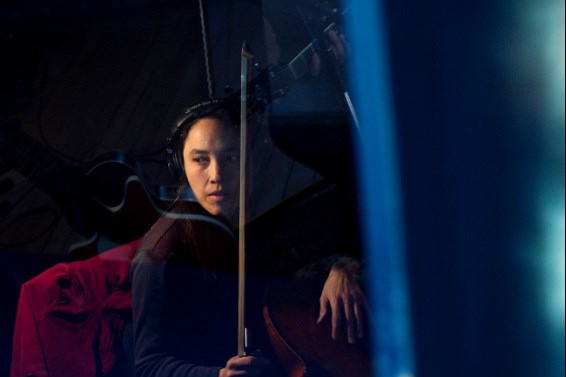What makes a song?
Is it the length of the piece, or the presence (or absence) of lyrics? Is it the instruments involved, or how the audience experiences and digests the music? Is it when it was written, or how easily it fits into a workout mix?
For Giorgio Magnanensi, artistic director of the trailblazing Vancouver New Music ensemble, the question of what makes a song is compelling enough to warrant an entire concert – and, after Saturday, Magnanensi and concert attendees alike should have an array of new answers to ponder.
The concert is Voices and Strings, and features Vancouver New Music performing new and recent works by Linda Bouchard, Jay Schwarz, Linda Catlin Smith, and Peggy Lee and Mary Margaret O’Hara.
“The song as an idea is pretty wide and open, but it’s more of an exploration of lyric expansion in different ways,” says Magnanensi in a recent phone interview.
Lee, a renowned Vancouver-based cellist, and the legendary singer-songwriter O’Hara (best known for her 1988 EP Miss America) will also perform.
“I wanted to have a new set of songs with Mary Margaret and Peggy, because I love their collaborations, and I love the fact that Mary is not particularly always on the frontline,” says Magnanensi. “She appears and disappears. She was in Vancouver three years ago, and I think that was the last time we saw her here.”
Voices and Strings will lead audiences on an aural journey that begins with the “distant sonority and atmosphere” of Smith’s Les fleurs anciennes (2000), whose melodic material hearkens back to the fourteenth century while not overtly embodying any specific pre-Baroque style.
Magnanensi describes the second piece – 2010’s Music for Orchestra III by German-American composer Schwarz – as eccentric. “Schwarz’ piece is very much about forming harmonic texture in a very slow motion,” says Magnanensi.
Bouchard’s new work Réfraction plays with the idea of refraction: melodic material disappears and resurfaces over the course of the song.
The evening closes with 2 cans and a string thing, Lee’s and O’Hara’s collaboration. It’s “a song that people would recognize as such” given the fact that it’s the one piece in the concert that actually contains vocalization, says Magnanensi.
It’s no accident that the ensemble for this concert is limited to stringed instruments, he adds.
“The pieces are actually all very different, and with strings as a uniform palette, you have so many different kinds of expression, both lyrical and harmonic,” says Magnanensi, who will conduct the ensemble through the various works.
Magnanensi is proud that Voices and Strings features a predominantly female ensemble performing the work of (with the exception of Schwarz) female composers.
“Not to be demagogically feminist in any way, but it’s true that women have always been, in the composition domain especially, ostracized, but they are beautiful composers, and in Canada, there are many of them,” says Magnanensi. “This is not about women and men. This is about beautiful music.”
At its heart, Voices and Strings highlights the diversity contained in a single question, according to its conductor.
“It’s always interesting for me to work on new things, to discover what people are doing with sound, and with ideas,” says Magnanensi.
“Material and sound is always the same. Sound exists before we write music. It’s a primary force, so to have different people working with that energy and bringing their own perspective is a beautiful discovery.”
• Voices and Strings takes to the stage of the Orpheum Annex on April 18. For tickets, visit NewMusic.org.


